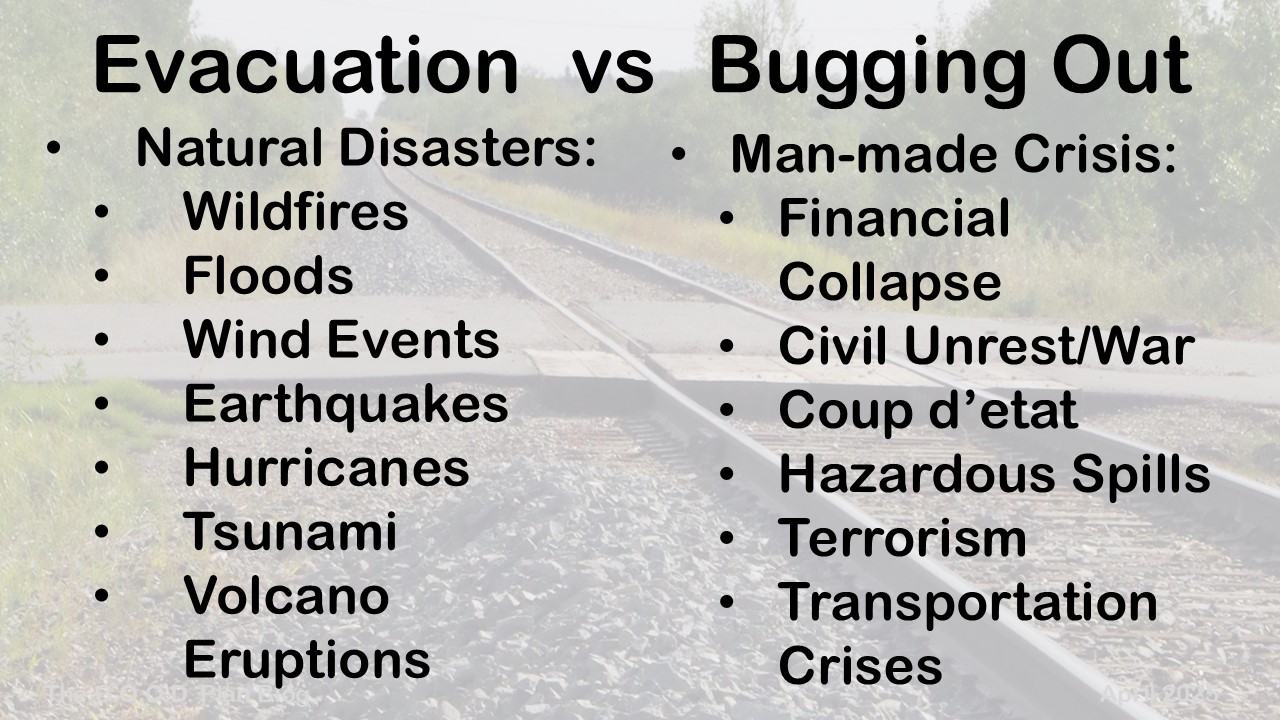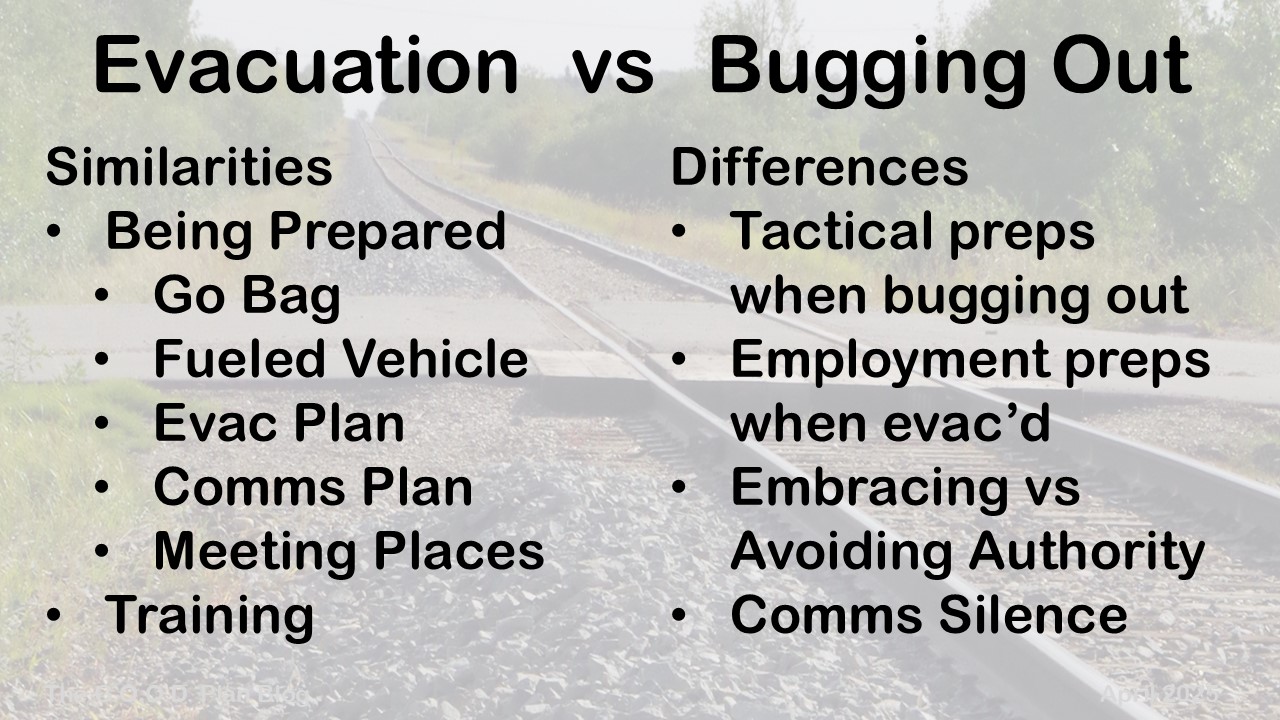 |
| Crossing the Tracks (photo by V.A. McMillan) |
Evac vs Bugging Out
Here we are on the 4th of April 2025 and it is time for another discussion. Today's chat will be on the similarities and differences between evacuation and bugging out. Recently, I have been watching a lot of YouTube videos to get some new ideas for revising my personal evac or bug out kit list. Instead, I found myself dismayed by the chat content following these videos and the lively exchanges both supporting the creator of the video and critiques of the items suggested. Some of the most vocal were the followers of a bug out bag culture critiquing items or packing methods used for those following an evacuation preparedness culture. This has motivated me to enter into this realm of discussion to try to bridge the gap between these two preparedness cultures. BLUF (Bottom Line Up Front): This is not one side is right and the other side is wrong. This is an exploration of what the end game objective is and whether or not that objective is being achieved. If you prefer, we will explore the "why" the person is being prepared. Preparedness is a continuum which accounts for regular, lower impact events at one end and extreme impact rare events at the extreme other end of the continuum. Many who practice preparedness sit somewhere between the extremes. And, many also practice many levels of preparedness depending on the situation triggering an action to leave one's primary residence. So, let's get into this discussion, shall we...

Speaking of kit, let's have a quick review of some categories that are shared and not shared between packing for an evacuation or bugging out.
Both recommend having critical items pre-packed and ready for a rapid departure from the start point with little to no notice. Critical items could include personal forms of identification, deeds, insurance plan numbers, health care cards, pictures of the family, education documents, lists of serialized property, investment certificates, banking information, spare keys to vehicle(s), home, or storage units.
Critical stuff can also include prescription medications, eye glasses/contact lenses, first aid kits, tourniquets, AEDs, over the counter (OTC) medicines, and stuff to stay clean. Beyond health care, are items for shelter (including clothing, footwear, hasty shelters), staying hydrated, and staying fed. Depending on the event, skills, training, resources, and expectations; these can be minimal in nature or a fully stocked RV unit.
This extends to sleeping gear, navigation kit, and those basic tools used by pioneers to survive daily life a couple of centuries ago - think shovels, axes, saws, hammers, etc. These tools will reflect knowledge, experience, and available resources of the person evacuating.
Last but not least are items to entertain self or others in protracted periods before getting back home. Whether this is a deck of cards or a bag of dice or a host of board games, the level of need will depend on the nature of those evacuated and the expected return. Children especially will need items to comfort and distract them. Plan accordingly. This goes doubly true for items that provide or preserve hope. Something to focus on to maintain your will to survive. The most dangerous times are when all hope is lost. It is in those moments when things can get very spicy.
One of the big differences between those who are prepared to bug out vs those who "merely" evacuate, is the consideration for having to abandon the evacuation vehicle in favour of traveling by alternate means or even on foot. Sometimes those who are psychologically prepared to go on foot, fail to extend consideration to those evacuating via vehicle, that they might also be capable of transitioning from motorized movement to self-propelled. It just might take them longer to cross-load out on the road. And, yes, there is the possibility that they will encourage challenges that rob them of their vital gear during that transition.






No comments:
Post a Comment